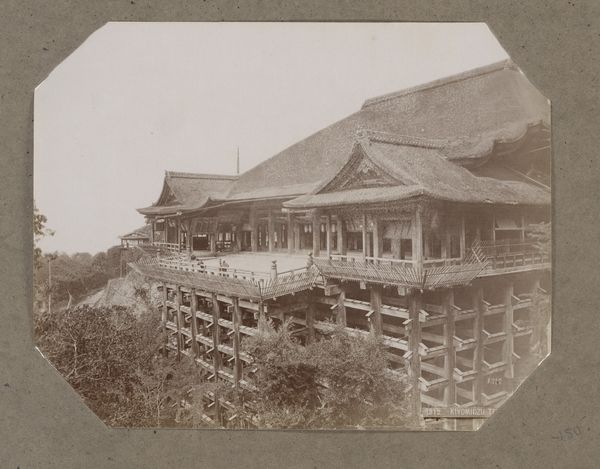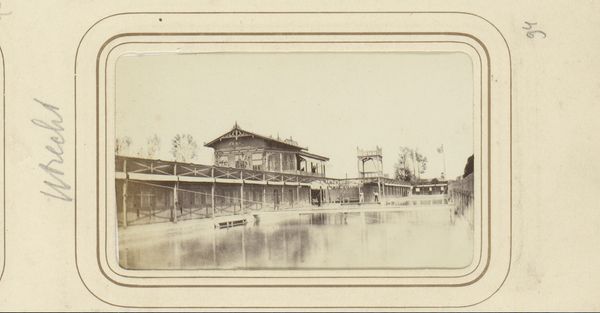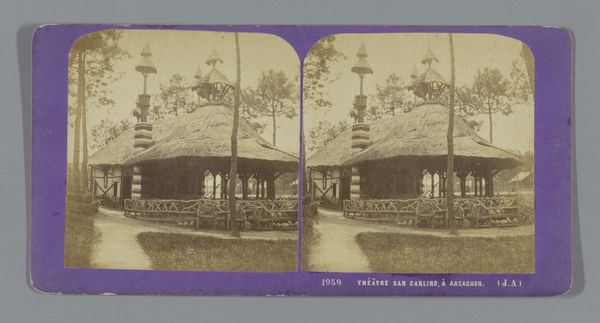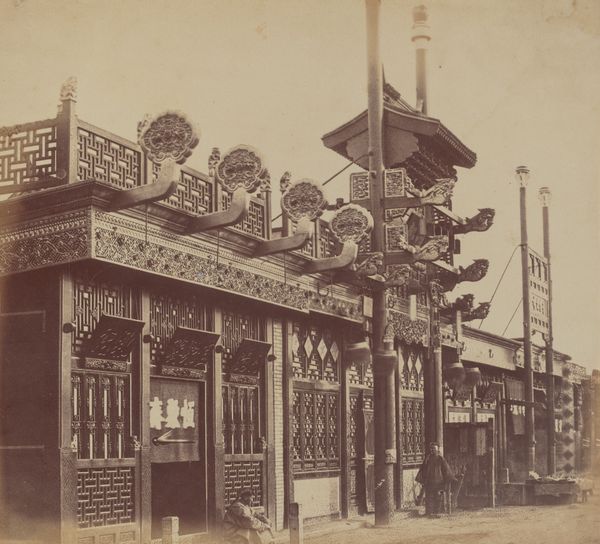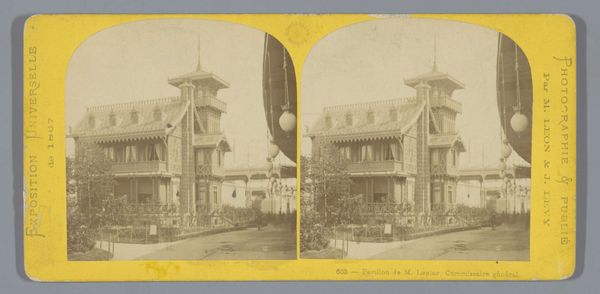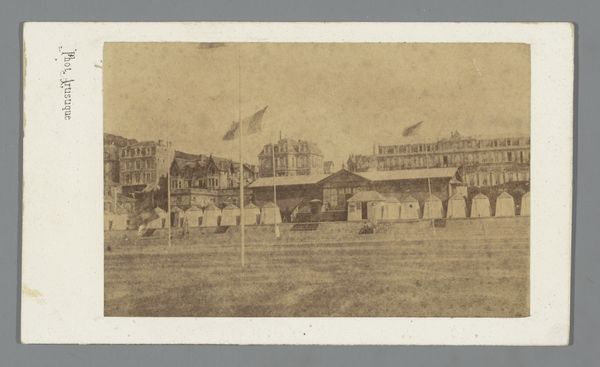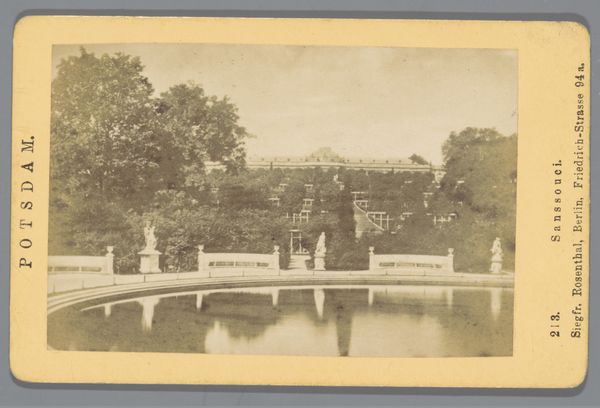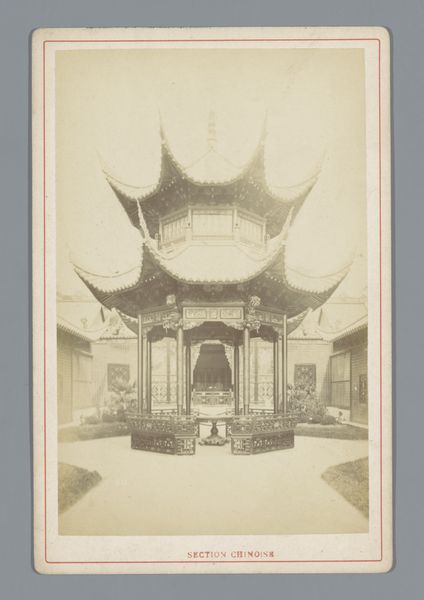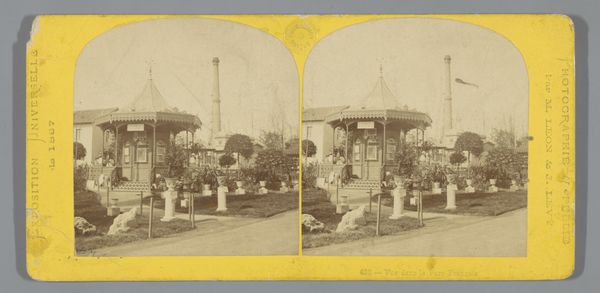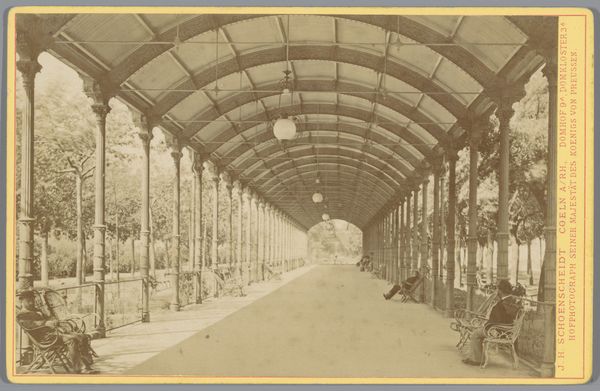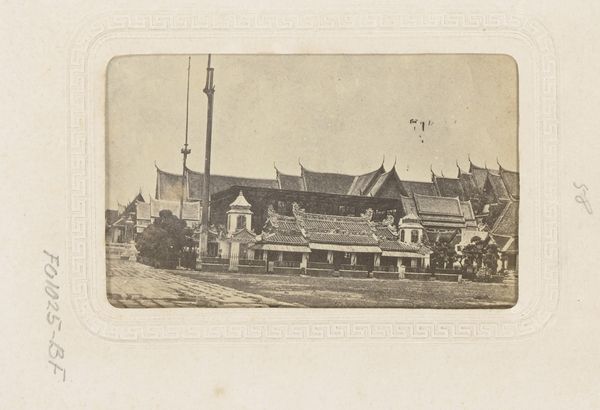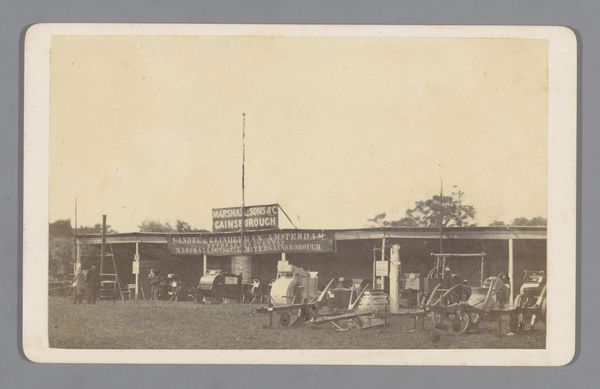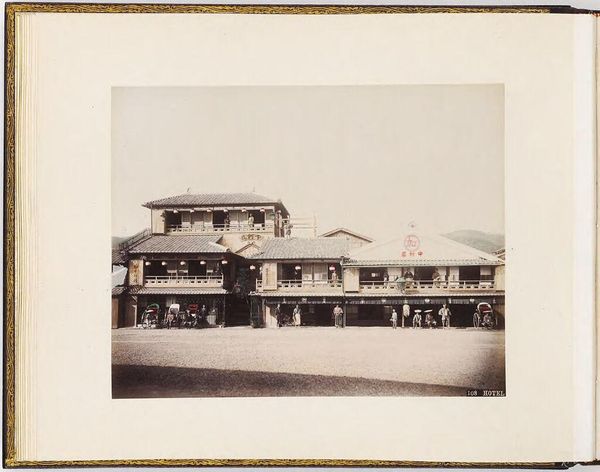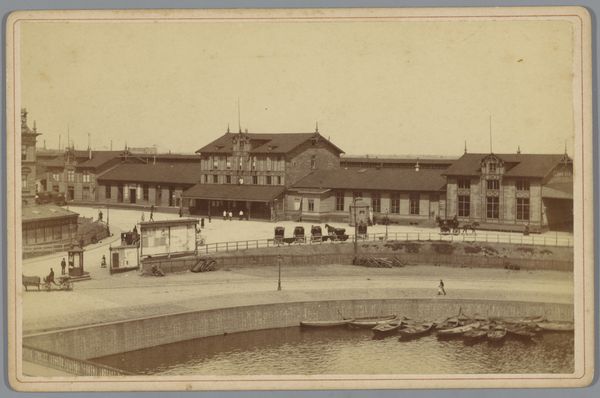
print, photography
# print
#
photography
#
orientalism
#
building
Dimensions: height 107 mm, width 164 mm
Copyright: Rijks Museum: Open Domain
Curator: What a ghostly yet serene photograph. It immediately gives me a feeling of a world seen through gauze. Editor: Absolutely. The Rijksmuseum presents to us a photographic print dating back to 1878 by Adolphe Block. Its full title is “Chinese paviljoen op de Wereldtentoonstelling te Parijs in 1878”, meaning Chinese Pavilion at the World Exhibition in Paris. Curator: "World Exhibition in Paris" – a statement loaded with colonial undertones. Look how the artist captures the pavilion, bathed in sepia tones – it’s so obviously framed and presented for Western consumption. What narratives were at play, I wonder, in showcasing a 'Chinese' spectacle? What about the power dynamics inherent in the act of exhibiting and observing "the other"? Editor: Precisely. It makes you wonder about the gazes, the curiosities and possible misinterpretations surrounding Chinese art and culture at the time. The composition emphasizes the pavilion’s architectural elements—the ornate roofs, the decorative woodwork... all framed in what can only be described as "orientalist" style. Do you agree? Curator: Undeniably, and I think the very nature of these world exhibitions encouraged and reinforced a kind of visual and cultural appropriation. I mean, think of the politics, the economics behind displaying cultural artifacts so divorced from their original context. I almost feel this image, so subtle in its presentation, echoes with this disquiet. Editor: There is a tangible tension within its very stillness, wouldn't you agree? Maybe Block wasn't actively supporting these colonial power dynamics, but there seems a detachment and distance. Ultimately, I suppose it’s impossible to know for certain from this vantage. Curator: In a way, Block's photograph is more than just an image. It is an artifact of its own history. One that demands we question not just what we see, but how we see, and why. Editor: I think that by showing us a fragment of the past like this image, this photograph invites us to consider the complex nature of cross-cultural understanding and artistic representation. Curator: Very eloquently said. Thanks! Editor: You're most welcome!
Comments
No comments
Be the first to comment and join the conversation on the ultimate creative platform.
